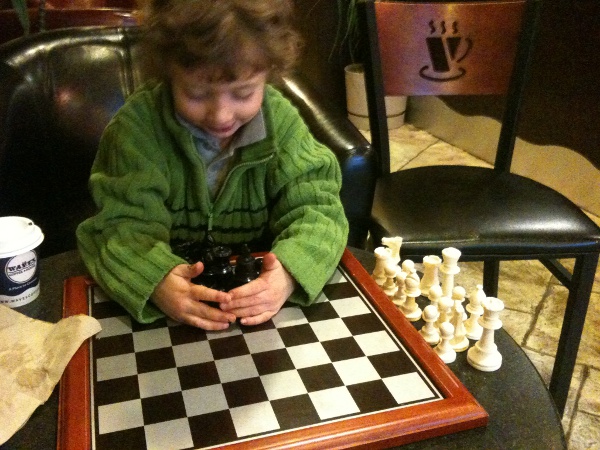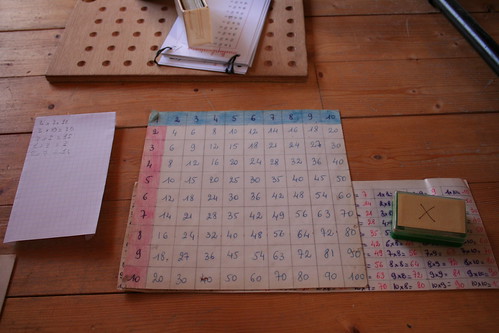This is a video of a teacher sharing an example of the PALS math curriculum in action. The pedagogy in this video though frustrates me though, and although the idea of Peer Assisted Learning Strategies (PALS) seems good, I don’t think the approach this teacher took is very good.
- She’s using rewards to encourage kids to work with each other. Alfie Kohn does a good job of explaining why this is problematic. "The smiley faces help you remember to mark points." She also spends nearly a minute describing to the kids how to do the task. My experience with kids this young (or any age really) is that they don’t have the attention span to remember something as complex and essentially arbitrary as the instructions necessary to this task "the teacher’s way."
- The students actually have very little interaction in this video with the numbers themselves. The symbols aren’t the numbers. In fact, I think they are an unnecessary layer of abstraction on the concept of number at this young age. Kids need representations of numbers that are more concrete, and once they have a concrete understanding of the concept, then you can move into the abstraction. The entire objective of this lesson seems to be to connect one abstraction (the verbalization of the numbers) with another abstraction (the symbols that represent the numbers).
If you want kids to learn about these two abstract representations, then you should pair them with a concrete representation with which the kids are more familiar. For example, the symbols should be paired with objects (ie 8 blocks paired with the symbol for 8). You should also teach the two abstractions independently of each other, if at all possible, at least when introducing them.
- It’s clear from the way the kids are reciting facts after this teacher asks questions that they do a lot of this. Reciting something verbatim doesn’t mean you understand what you are doing. In this entire clip, the teacher doesn’t give a single piece of feedback to the students about their learning. Learning is a process through which you incorporate feedback from the world into your existing schema of the world. The only feedback the kids get is the voices of the other children saying the same thing as them, which is minimal at best.
- Not a single kid gets to ask a question, like "why do the numbers look like that?" What would be the harm in the kids spending some time creating their own number system, and then matching it to our existing one?
- It seems like the interaction between the kids is forced. I’m sure there must be more natural ways of discussing the numbers and providing feedback to each other on understanding of the numerals than this contrived activity.
In fairness, I cannot tell from this video anything more than this particular 5 minute segment of this one teacher’s class could use improvement. There does seem to be some evidence that this is a typical 5 minute period, at least at the beginning of class, but it could be that the rest of her class is wonderful. I do think that I wouldn’t share this particular 5 minute clip as example of good pedagogy.






